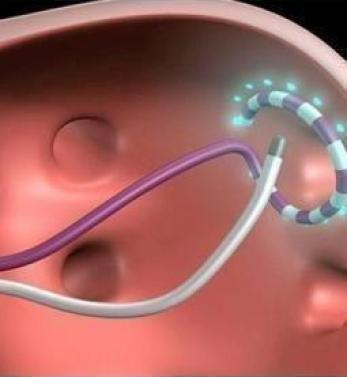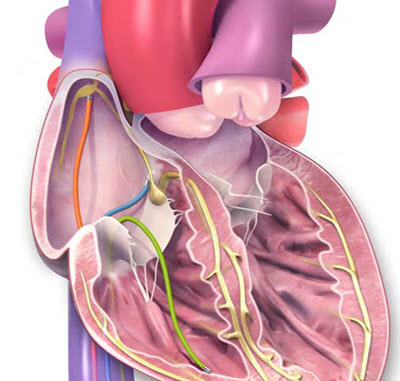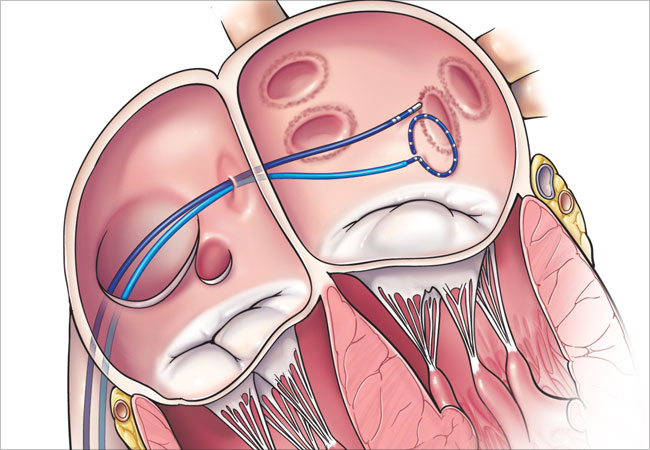

The heart of a healthy person works regularly at a certain number of beats per minute. This speed is between 60 and 80 at rest and follows each other at equal intervals. However, disruptions in the rhythm of the heart due to small electrical currents occurring in the sinus node are called arrhythmias. Many types of arrhythmias underlie these arrhythmias. Tachycardias in which the heart rate exceeds 100 beats per minute are also included in arrhythmias. The abnormal heart tissue that causes tachycardia is destroyed and removed so that the discomfort can be treated. This treatment is called catheter cardiac ablation, radiofrequency ablation (RF ablation), cardiac ablation or simply ablation. Ablation can be done through thin and long tubes called catheters, or it can be done during open heart surgery.
 What are the Advantages of Ablation?
What are the Advantages of Ablation?
The most important advantage of ablation is the complete elimination of the problem area causing the abnormal heart rhythm, which rhythm-regulating drugs can never do. Another advantage of the ablation procedure is that it eliminates the need for most patients to use rhythm-regulating drugs throughout their lives. There is a 70% to 99% success rate in ablation, depending on the severity of the disease and the type of palpitation detected. Recovery time after ablation surgery is very short. Almost all of the patients can return to their daily routines in just 1 day after the ablation procedure.
What Are the Potential Risks of Catheter Ablation?
As with any operation, catheter ablation also carries some risks. We can list these risks as follows:
1 or 2 per thousand chance of death
High-grade AV block (may require a pacemaker.)
Fluid filling of the pericardium and compression of the heart
coronary artery spasm
pericardium inflammation
bleeding into the abdomen
Bleeding at the catheter insertion site
vascular injury
low blood pressure
Transient ischemic attack
Before Catheter Ablation:
If catheter ablation is planned, first of all (EPS) electrophysiological studies are performed to investigate the origin of the arrhythmia. It is preferred that patients fast for 8 hours before catheter ablation procedure.
During Catheter Ablation:
The catheter ablation procedure is similar to EPS or coronary angiography. The patient is first taken to the catheter laboratory. Generally, local anesthesia is applied to the inguinal region of the patient and it is entered through the inguinal vein. It is a painless procedure. After the responsible area is detected, energy is given to this area by means of a catheter with a metal electrode at the tip, and the responsible cells in this area are burned and destroyed. In the meantime, the patient may feel burning and palpitations in the chest. The processing time is usually very variable, and the process can take from 1.5 to 6 hours.
After Catheter Ablation:
In order to prevent bleeding where the catheter enters the body, this area is wrapped and a light weight is placed. Then the patient is taken to bed rest. If the ablation is performed on the arm, bed rest is not required. After the patient is discharged, some recommendations are made, such as not lifting heavy and not doing heavy exercise for 24 hours. A slight pain or bruising may occur at the site of the procedure, and this is perfectly normal. However, in case of increased pain, swelling and redness, the doctor should be informed about the situation.
 How Is Ablation Treatment Done?
How Is Ablation Treatment Done?
Ablation is similar to electrophysiological studies in terms of application. The only difference with ablation is that an additional catheter specific to ablation is used during the procedure. Ablation surgery can be considered as the second level of the EPS procedure, since only the diagnosis is made in the EPS procedure. After determining the causes of arrhythmia and its location in the heart by means of electrophysiological study, the problematic area is eliminated with ablation.
In catheter ablation, a catheter is sent into the heart through a vein in the groin or arm. Where the catheter is located in the heart can be monitored by X-rays. The tip of the catheters is connected to the recording device and intracardiac ECG recordings are taken. Thus, as a result of the research, there is the focus that causes tachycardia. Then, this area is destroyed by giving radiofrequency energy through the catheter, thus eliminating the responsible focus. Radiofrequency energy is generally used to destroy the responsible focus.
In the hot ablation technique, the damaged area is heated with the help of radio waves called radiofrequency energy and the area exposed to heat between 50 and 70 degrees completely loses its function. In this way, the focus causing arrhythmia or heart palpitations is permanently removed. It is not possible to correct this situation with the help of drugs that regulate the rhythm.
In the cold ablation method, unlike hot ablation, the targeted area is cooled and frozen to -50 to -70 degrees using nitrogen gas. Both methods have advantages and disadvantages. Therefore, treatment planning should be based on the type and severity of arrhythmia.
Ablation or Medication? Which Should You Prefer?
One of the question marks on the minds of many patients is whether medication or surgery will be preferred for treatment. Many patients have a dilemma about getting on with their lives with ablation surgery and drug therapy. First of all, it should be known that drug therapy is not a form of treatment that is wrong. If the sick person has completely got rid of the existing rhythm disorders and complaints thanks to drug treatment, there is no harm in continuing the rest of his life that way. However, the most important problem here is that sometimes the rhythm disorder in the heart seems to have improved with the help of medication. However, in this case, the disease becomes worse in the following years in most patients. In many patients, cardiac arrhythmia often starts from a single point. Therefore, it is easy to destroy a single point with ablation in such patients, and in such cases, complete recovery is usually achieved in the patient. However, some rhythm disorders may start from a single point and spread to more than one point in the heart, sometimes months or years later, or may cause the development of another arrhythmia (Atrial Fibrillation). Such cases are called late and even if ablation treatment is performed at this stage, it is not always possible to achieve full recovery.
The second important point is that rhythm-regulating drugs have serious and life-threatening side effects. These types of drugs have been in existence for 40-50 years. Ablation therapy, on the other hand, is today's current treatment method, which has been well adopted with its safety and effectiveness in the last 20 years. Therefore, when a patient with arrhythmia has the opportunity to completely get rid of the rhythm disorder with ablation, preferring drug therapy that carries the risk of serious side effects from almost 50 years ago means insisting on outdated treatment and rejecting the opportunities available today.